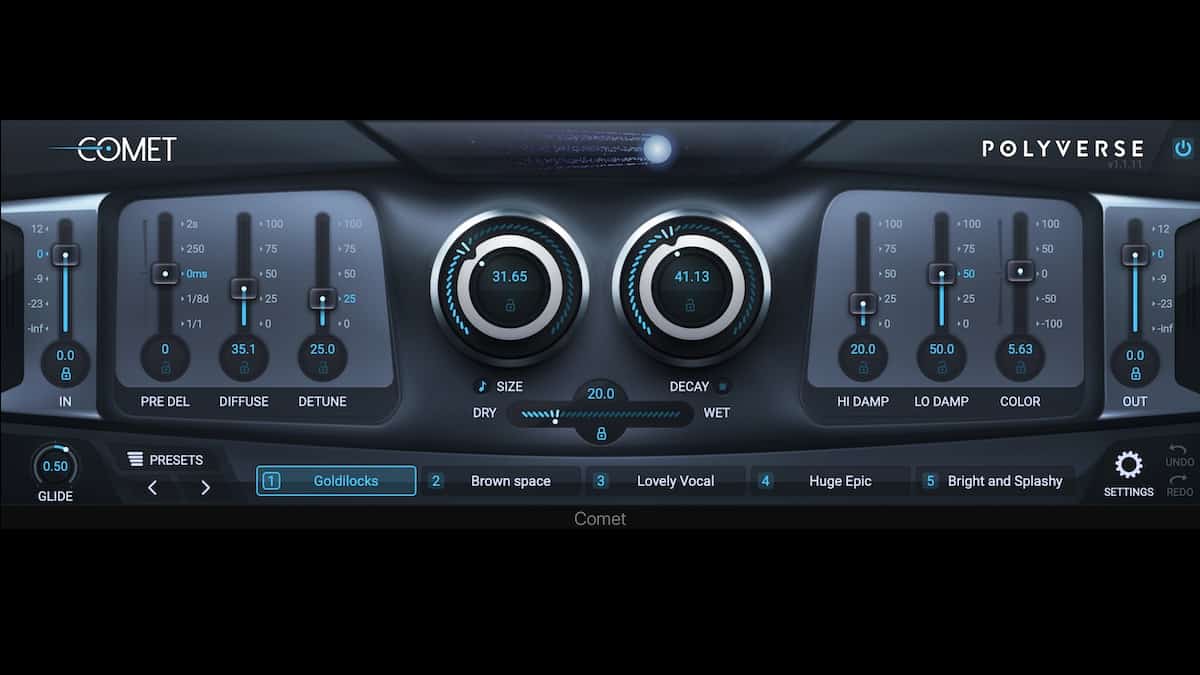Effects
Polyverse Comet – the Synth and Software Review

Yes, the world does have room for another reverb when it brings something new to the table.
Treating reverb as an effect rather than just space simulation is at least as old as gated reverb, flanged reverb tails, ambient spaces, all kinds of convolution effects, spring reverbs in amps, and much more. But Polyverse is quite unabashed about its design concept for Comet.
They bill this reverb plug-in as “trails of beauty” – a smooth reverb that doesn’t try to emulate spaces “because that would be boring.” And one would have to say that’s a fair description.
To be sure, it does create ambience, and it does work very well as a normal reverb. But this is an algorithmic reverb processor you’re going to reach for when you’re after something different, or at least when you want to treat an individual instrument (including vocals) rather than on a whole mix.
It’s also the kind of reverb that begs you to “perform” it (or automate its parameters). You can assign MIDI controls to parameters from inside the plug-in interface.
Insertion. Insert an instance of Comet, and your first reaction is likely being impressed by the smooth sound of its default program, Goldilocks.
Then you see its five program slots. Naturally, you’ve already read that it can morph between them, so you click on one that isn’t active and hear the reverb tail pitch shift smoothly as it switches programs.
That’s actually a feature, not a bug, and you can adjust the glide time in either musical values (synced to the host clock or CV) or time. Actually, this effect is my favorite thing about Comet. Reduce the reverb size and the pitch goes up as you move the wheel, increase it and it falls.
If you increase the decay so the tail rings a long time – or indefinitely (which usually requires turning off the highpass and/or lowpass filters) – you can create a storm wind effect by moving the Size wheel.
And that’s just one of any number of possible effects. For example, slide the detune all the way up, set a small size, and long decay, and you’ll get a descending tail that sounds like a thunder sheet or a gong resonating.
The maybe add a long predelay – in musical values, if you want – for a repeat delay. Being able to set the predelay in musical values is very useful.
A great thing about plug-ins is that you can use multiple instances. Maybe you’d want to run the above effect through a second instance of Comet with more standard ambience on top of it.
Comet is dead simple to use, with just seven parameter-adjusting controls that are all self-explanatory (although it is worth sitting through the full tutorial).
This is very different from, say, a classic Lexicon reverb with pages upon pages of detailed parameters to tweak. That reinforces my previous comment about this being a reverb that invites you to perform it in real time – although there’s nothing wrong with using static settings.
Finally, the higher you set the input level, the more the signal is saturated to create a richer sound. You can then compensate for that with the output level.
Thus Polyverse Comet is another native reverb proving we’re in the golden age of plug-in reverb processors. It really does live up to its “trails of beauty” claim.
Please check back to hear some examples of Polyverse’s sound after we post them. In the meantime, the company has lots of good demos on its site (link just below).
Price: $149
Click here for more info and demos
















